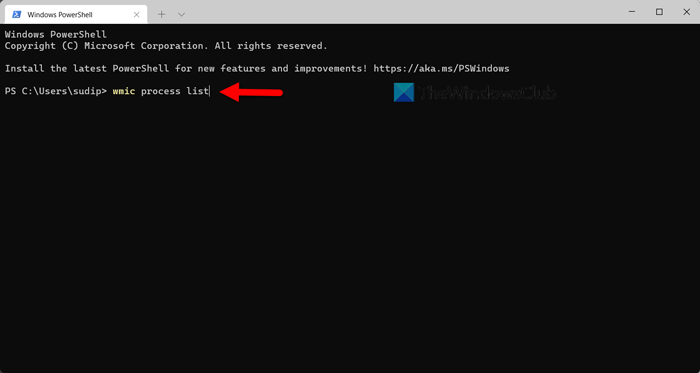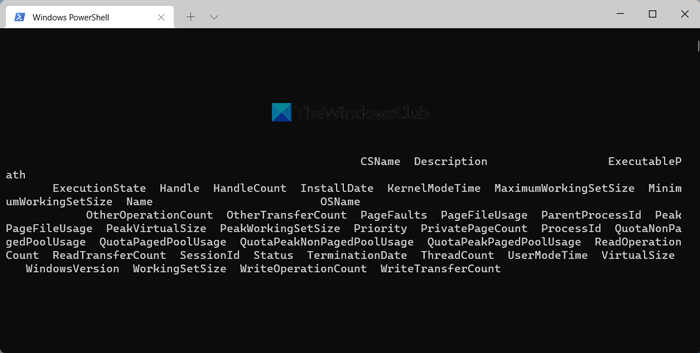you can use WMIC . command line to find & Check running processes By name on your Windows 11/10 PC. We show you how. A simple WMIC command can help you get a list of all the processes running on your computer. Instead of using the task manager, you can give this WMIC command a try to get the job done.
What does WMIC offer about the process?
Although Task Manager is a great source of information, you can use the WMIC command to accomplish the same thing. The advantage of using WMIC is that you can find more detailed information from Task Manager. FYI, it displays the following things:
- ExecutablePath
- KernelModeTime
- page file
- priority
- PageFaults
- ReadTransferCount
- session ID
- Termination Date
- work group
- WriteOperationCount
- VirtualSize
- Windows version
- type conversion
- PeakPageFileusage
Other than these, there are more other things that appear after entering the command below.
How to find all running processes using WMIC in Windows 11/10
To find all processes using WMIC in Windows 11/10, follow these steps:
- press win + X To open the WinX menu.
- select file Windows Terminal to choose.
- Enter this command: wmic . process list
- Find the details in the Windows Terminal window.
It is possible to use Command Prompt and Command Prompt instance in Windows Terminal. Either way, you will get the same result. However, here we have used Windows Terminal to show you the example.
First, you need to open the WinX menu by clicking on File win + X buttons. Then select File Windows Terminal option in WinX menu.
As mentioned earlier, if you want to use Command Prompt, you need to look for it poultice in the taskbar search box and click on the individual search result.
Once you open Windows Terminal, you will need to enter this command:
wmic process list
After that, you can see all the information needed to diagnose your computer or something else.
As we said before, you can find the executable path, description, installation date, etc.
Disadvantages of using WMIC on Task Manager
The main drawback or drawback of using WMIC over the Task Manager is the user interface. Although it shows more details than the task manager, the user interface makes it difficult to read the data. No matter which monitors you try, you can find the same issue across all displays.
When the task manager displays columns, task names, etc., separately, the WMIC prompt displays these columns together. The only way to read the data is to export it to a text editing application, such as Notepad, Notepad++, etc.
Whether you execute the above command in Windows Terminal or standalone Command Prompt window, the data is displayed in a similar way. However, if you can get around this problem in any way, you will find the way to get to know all the running processes very easy.
Read: How to check the battery level using WMIC in Windows
How can I see all running processes?
There are multiple ways to see all the running processes on Windows. However, the easiest way to find it is by using the Tasklist command of the task manager. Task manager has a custom Processes tab, where you can find all running processes. Apart from that, you can switch to a file Services The tab, where it displays all the running services that are on your computer. Last but not least is a file details Where you can find all processes by user. This post will show you how to create and print a list of running processes in Windows Task Manager.
How do I list all processes in Windows?
As explained earlier, you can list all the processes in Windows 11/10 with the help of Task Manager. However, if you don’t want to export anything, you can always try the WMIC method. A simple command in Command Prompt or Windows Terminal can help you find all the running processes in a matter of moments.
Read: Disable startup programs in Windows using WMIC.



Comments
Post a Comment